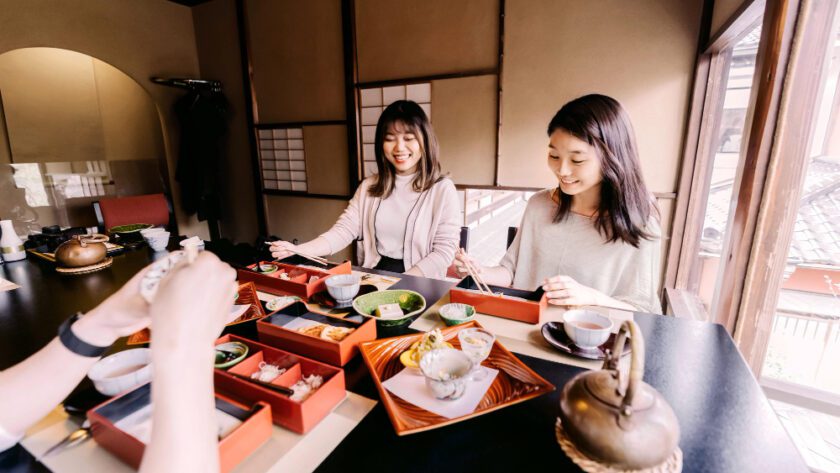Japanese cuisine has captivated food lovers worldwide with its exquisite flavours, meticulous presentation, and cultural significance. Dining at an authentic Japanese restaurant like https://www.ginza-stjames.com/ is not just about enjoying a meal; it’s an experience steeped in tradition and etiquette. For those unfamiliar with Japanese customs, navigating this experience can be a bit daunting. Here’s a comprehensive guide to help you understand the do’s and don’ts of dining in an authentic Japanese restaurant.
Understanding Japanese Dining Culture
The Importance of Respect and Manners
Japanese dining etiquette is rooted in respect—respect for the food, the chef, the dining environment, and fellow diners. This cultural focus on respect manifests in various ways, from how you handle your chopsticks to how you converse with your dining companions.
Harmony and Minimalism
Japanese dining environments often emphasize harmony and minimalism. Clean lines, natural materials, and a tranquil atmosphere are common. These elements reflect the broader cultural principles of Wabi-Sabi, which finds beauty in simplicity and imperfection.
Before You Arrive
Make a Reservation
Many authentic Japanese restaurants, especially high-end ones, prefer or even require reservations. This practice ensures they can prepare adequately and offer you the best dining experience possible. It’s a good idea to call ahead and secure your spot, especially for popular establishments.
Dress Appropriately
While dress codes can vary, it’s generally best to opt for smart-casual attire. Avoid overly casual clothing like shorts, tank tops, or flip-flops. In more formal settings, a business-casual outfit is usually appropriate.
At the Restaurant
Greetings and Seating
Upon entering, you’ll often be greeted with a warm “Irasshaimase!” (Welcome!). A polite bow or a nod in return is appropriate. If there is a host or hostess, wait to be seated rather than choosing your own spot.
Removing Your Shoes
In some traditional settings, you may be asked to remove your shoes before entering the dining area. This is particularly common in places with tatami mat seating. Make sure to wear clean socks and be prepared for this possibility.
At the Table
Handling Chopsticks
Proper use of chopsticks is crucial in Japanese dining. Here are some basic guidelines:
- Do use the chopstick rest (hashioki) provided.
- Don’t stick chopsticks upright in your rice bowl. This resembles a funeral rite.
- Do use chopsticks to transfer food to your plate, not directly to your mouth from shared dishes.
- Don’t use chopsticks to pass food directly to another person’s chopsticks. This also mimics a funeral custom.
Ordering Food
When ordering, it’s polite to address the waiter with a slight bow or nod. If you’re unsure about a dish, feel free to ask the staff for recommendations—they often appreciate the interest in their cuisine.
Eating Soup and Rice
- Soup – It’s acceptable to lift the bowl to your mouth and drink directly from it. Use the provided spoon for the solid components.
- Rice – Hold the rice bowl close to your mouth and use your chopsticks to eat. Avoid drenching your rice in soy sauce, as it’s considered disrespectful to the chef’s efforts.
Saying Thanks
Before you start eating, it’s customary to say “Itadakimasu,” a phrase that expresses gratitude for the meal. After you’ve finished, say “Gochisosama deshita,” which means “thank you for the meal.” These phrases show appreciation for the food and those who prepared it.
Dos and Don’ts of Japanese Dining
Do’s
- Do Slurp Your Noodles – Slurping noodles is a sign that you’re enjoying your meal. It also helps enhance the flavours.
- Do Finish What’s on Your Plate – Leaving food behind is considered wasteful and disrespectful.
- Do Place Your Chopsticks Properly – When not in use, place your chopsticks on the chopstick rest. If there isn’t one, lay them across your bowl or plate.
Don’ts
- Don’t Pour Your Own Drink – In Japanese dining culture, it’s polite to pour drinks for others and let them pour yours in return.
- Don’t Use Excessive Soy Sauce – Adding too much soy sauce can be seen as disrespecting the chef’s seasoning.
- Don’t Speak Loudly – Maintain a quiet and respectful tone. Japanese dining environments are usually serene and peaceful.
Unique Dining Experiences
Kaiseki Dining
Kaiseki is a traditional multi-course meal that showcases seasonal ingredients and meticulous preparation. Each course is a work of art, and the presentation is just as important as the taste. The pacing is slow, allowing diners to savour each dish fully.
Sushi Etiquette
When dining at a sushi restaurant, there are specific customs to follow:
- Do Eat Sushi with Your Hands – It’s perfectly acceptable to eat sushi with your hands, especially nigiri.
- Don’t Mix Wasabi in Soy Sauce – Instead, place a small amount of wasabi on the fish directly.
- Do Eat in One Bite – Sushi pieces are designed to be eaten in one bite to appreciate the harmony of flavours.
After Your Meal
Paying the Bill
In Japan, it’s common for the bill to be brought to your table in a small tray. Take the tray to the cashier to pay. Tipping is not customary in Japan and can even be considered rude. Instead, show your appreciation with a heartfelt “thank you” and a smile. Of course, if you’re going to a Japanese restaurant in the UK, stick with the UK tipping customs.
Leaving the Restaurant
As you leave, it’s polite to thank the staff with an “Arigatou gozaimasu” (Thank you very much) or “Gochisosama deshita.” A slight bow can also convey your gratitude.
Final Thoughts
Dining at an authentic Japanese restaurant is more than just a meal; it’s an immersive cultural experience. By understanding and respecting Japanese dining etiquette, you not only show respect for the culture but also enhance your own enjoyment. Remember these do’s and don’ts, and you’ll navigate your dining experience with grace and appreciation.
Embrace the opportunity to learn and savour the rich traditions of Japanese cuisine. Bon appétit, or as they say in Japan, “Itadakimasu!”




